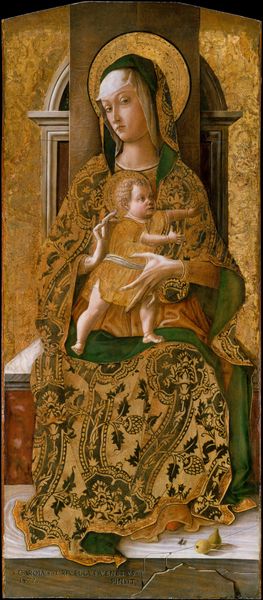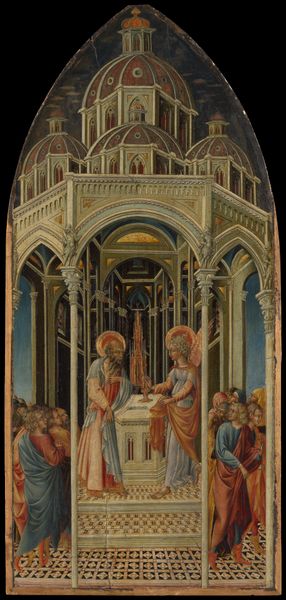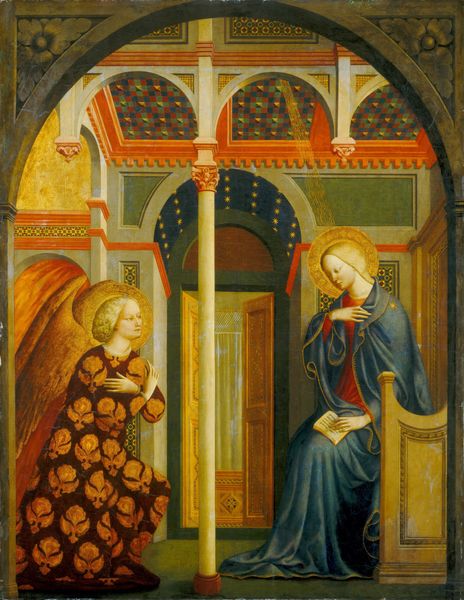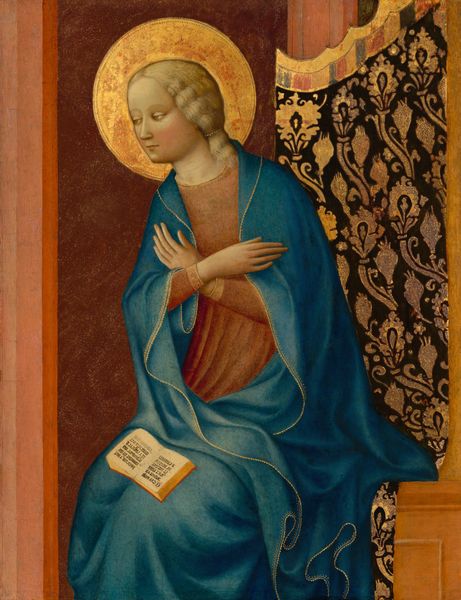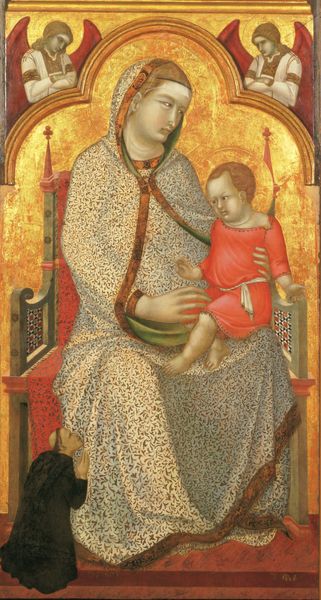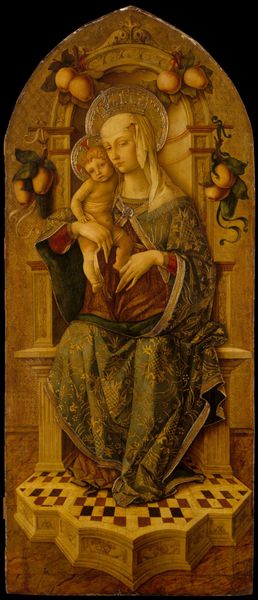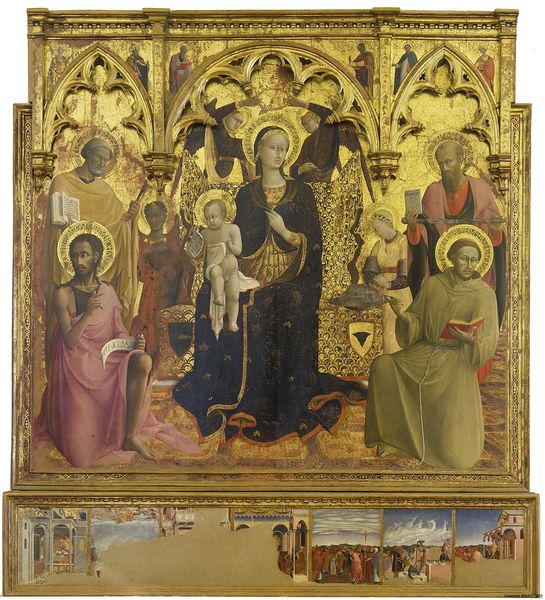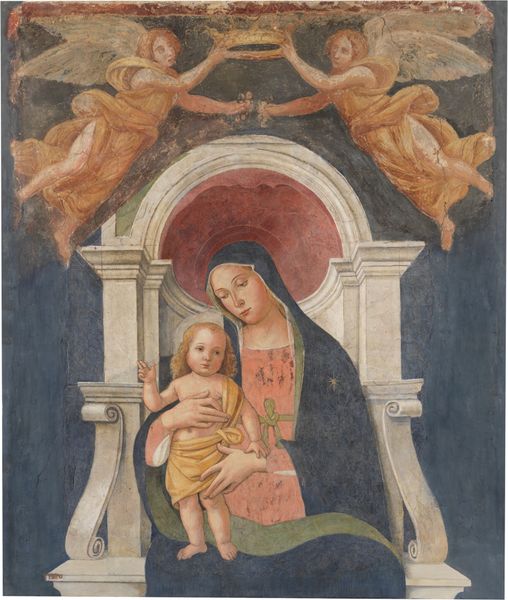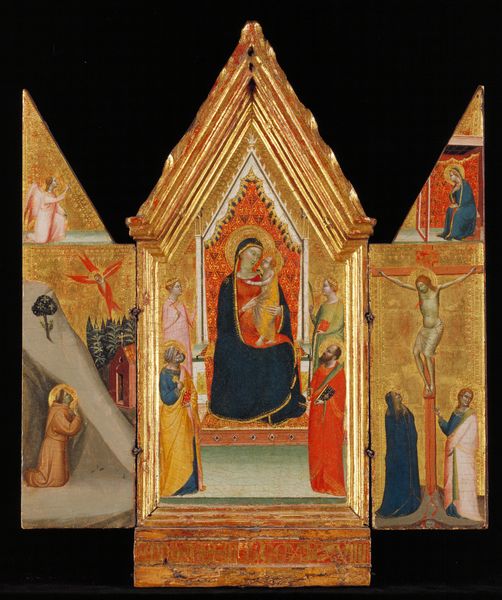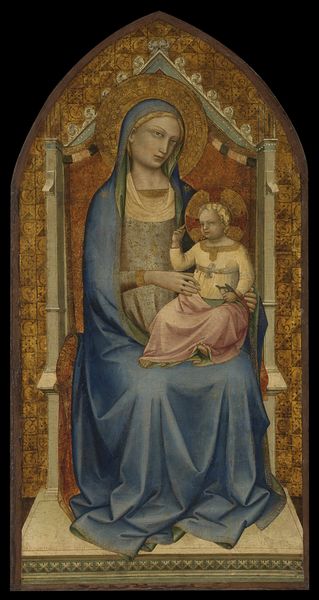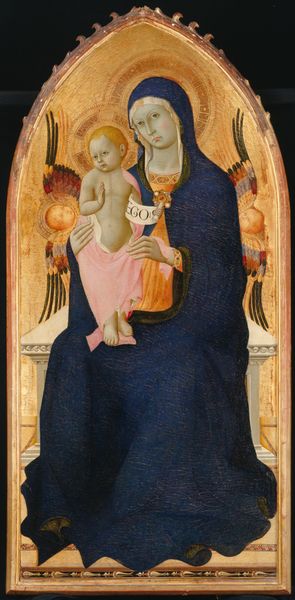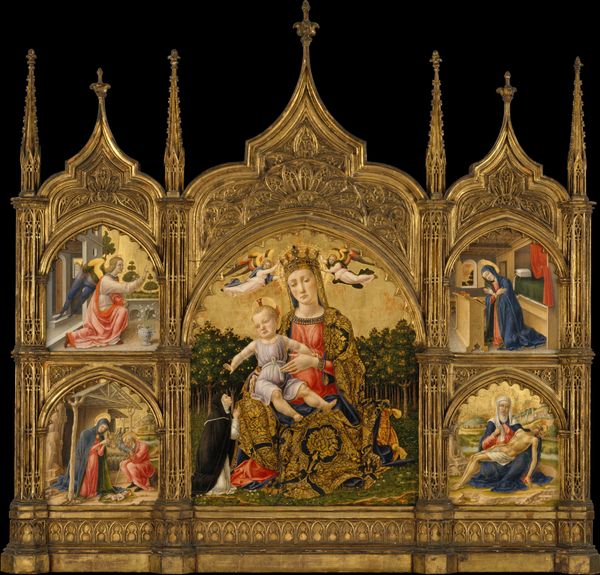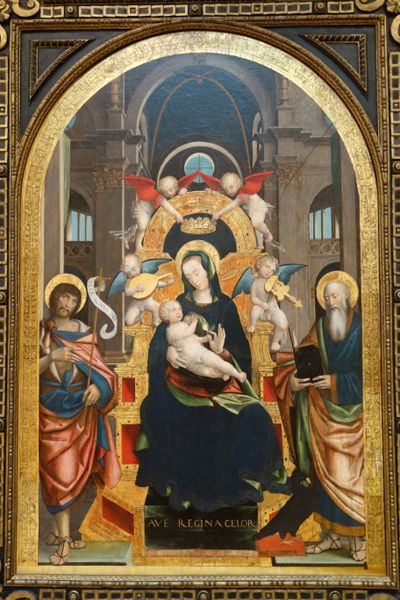
tempera, painting
#
portrait
#
medieval
#
tempera
#
painting
#
figuration
#
madonna
#
oil painting
#
child
#
history-painting
#
international-gothic
#
italian-renaissance
#
portrait art
Dimensions: 10 3/16 × 7 15/16 × 7/16 in. (25.8 × 20.2 × 1.1 cm)
Copyright: Public Domain
Curator: As we contemplate this piece, an anonymous rendering known as "Virgin and Child Enthroned," executed around 1345-1350, I find myself drawn into a space of maternal reverence. What's your initial reaction? Editor: There's a solemnity to it, isn't there? Almost a hushed atmosphere. Despite the gilded details and bright halos, it feels reserved. I wonder what socio-political contexts shaped that aesthetic decision? Curator: Certainly, we are steeped in the medieval artistic style. And what resonates with me profoundly is how the artist conveys Mary not merely as a mother, but as a Queen—the Queen of Heaven. Editor: Yes, and how interesting that you mention Queenship! How would contemporary viewers receive this obvious connection of Mary with earthly royalty? How might the church have *intended* its audiences to respond? Curator: The imagery is steeped in symbolism meant to project power, both divine and earthly. The gold leaf signifies divinity, purity, and spiritual wealth—visual cues reinforcing the Madonna's exalted position. It reinforces the church's own. Editor: I agree, though I wonder if emphasizing Mary’s earthly status helped normalize the Church’s power, too? Using earthly queens as symbols for Mary risks making religious authority seem not otherworldly at all. Curator: That's a fascinating point— the Madonna herself acts as this intercessor, connecting us between the divine and the mortal. She holds Christ—the incarnation of divinity on earth. The softness of the colors draws our focus towards their humanity, doesn't it? The pinks and blues speak to tenderness. Editor: Indeed, color here plays a huge role. We should recall that the sourcing of materials shaped this kind of art significantly; where these pigments came from was not just an aesthetic concern but deeply impactful culturally, internationally, even politically. Curator: This painting, a product of its era, provides more than just an image; it reflects how power structures operated during that epoch. Looking at this Madonna and Child, we uncover not just a religious icon but a social artifact, reflective of complex, layered beliefs. Editor: Ultimately, the interplay of faith and power depicted in this piece invites continuous interpretation.
Comments
No comments
Be the first to comment and join the conversation on the ultimate creative platform.

